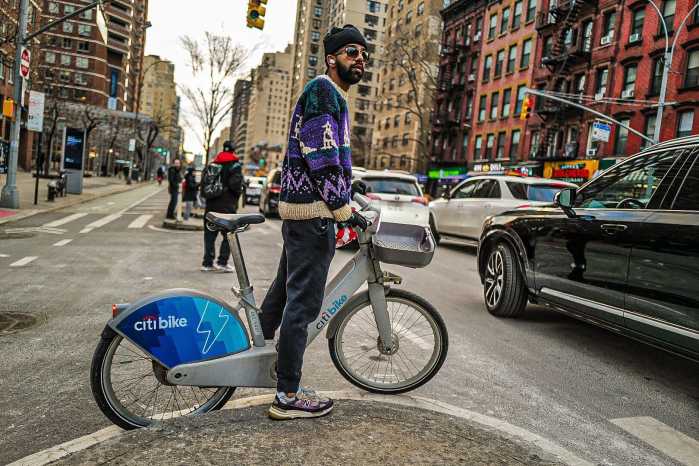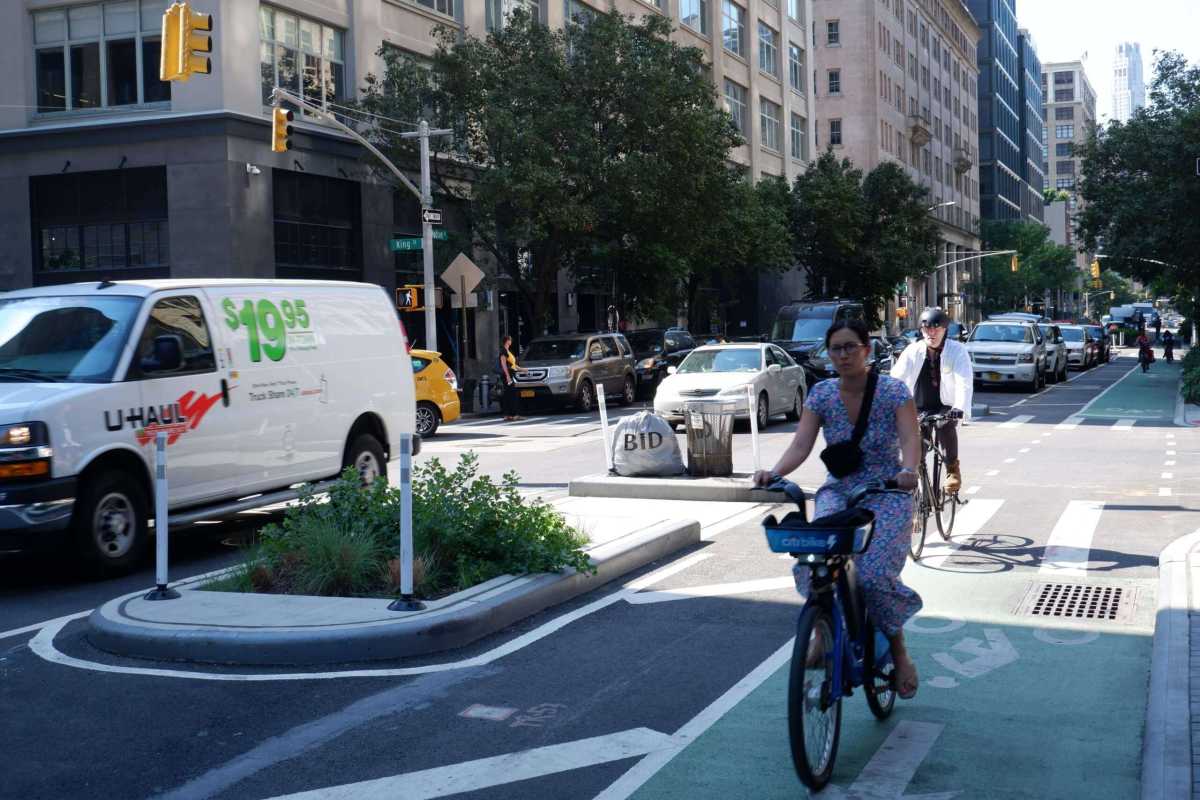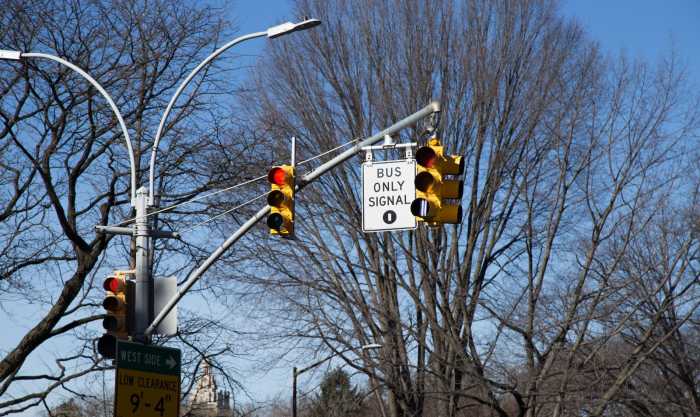New Yorkers from every borough say that NYC is undergoing a massive transportation revolution. They see changes such as more street redesigns for cyclists, more micromobility vehicles on the road and even tolls to limit traffic.
Various governmental initiatives are driving these changes. From congestion pricing that aims to limit traffic into most of Manhattan, or at least the Central Business District below 61st Street, to more bike lanes, green space, and pedestrian plazas, a lot is happening that is changing the street network through NYC.
These changes spark newspaper headlines almost every day, begging the question from many New Yorkers: What will NYC transportation be like in 20 years?
No one can predict the future of course, but as governments rapidly implement change, the trajectory shows a preference toward more bikes and public transit, and less creature comforts for cars.
‘Reliable and environmentally friendly’?
The transit transformation has been gradually taking shape since NYC officials launched the Streets Plan in 2021. The plan aims to make streets safer for cyclists, pedestrians, and drivers alike.
“The future of New York City is one where everyone has access to reliable and environmentally friendly transportation options, as well as safe and welcoming streets and public spaces,” the DOT website states.
The Streets Plan is based on Nov. 2019 legislation, Local Law 195, which requires the DOT to issue and implement a transportation master plan every five years. Created when former mayor Bill de Blasio was in office, the Streets Plan has ambitious goals that include creating 250 miles of protected bike lanes over five years—many of them replacing street space used for driving and parking.
Going forward, the plan also calls for other changes officials say are aimed at making streets safer, including completing a connected bike lane network, installing physical or camera-protected bus lanes and many accessibility improvements due in 2026.

“Over the past three years we’ve built a record number of protected bike lanes, pedestrian space, and intersection safety upgrades that are making our streets safer and better for everyone,” DOT Commissioner Ydanis Rodriguez said. “New York City is the national leader in pioneering street safety and public space improvements, and we look forward to building upon this success.”
On biking, Tory Ezell, a Staten Islander, agreed that safety is paramount and bike lanes serve an important purpose.
“I think they’re really useful, especially in other parts of the city,” she said. “I don’t love that someone almost hit me while walking in one at a light on Monday night, though.”
Ben Furnas, executive director of Transportation Alternatives, a group that advocates for street safety and bike lane installation, wants New Yorkers now and in the future to live “free of fear” when they navigate the bustling streets of the Big Apple.
“We hope to live in a New York City where our streets are free of fear and full of life, where kids can walk to school without their parents getting nervous they’ll get hit by a car, where people of all ages and abilities feel comfortable hopping on a bike to get around because no one lives more than a few blocks from a citywide protected bike lane network, where our city’s buses run quickly and predictably thanks to clear bus lanes and frequent and reliable service, where our streets are filled with places to gather, where the subway’s never late, and highways no longer divide communities from Brooklyn to the Bronx,” he said.
Collision rates are dropping. Will the trend continue?

There is hope for street safety—at least right now. According to the latest NYPD data, traffic fatalities are down nearly 36% year to date compared to 2024. Injuries from collisions also fell by 14% during the same period.
However, while there were no fatalities involving traditional bicycles this year, eight people were killed to date in 2025 in collisions involving motorized two-wheelers, like e-bikes and mopeds.
Rabbi Michael Miller knows all too well about the dangers of e-bikes. He suffered a broken leg after being struck by a speeding e-bike driver on the Upper East Side last May. While the driver stopped to check on Miller briefly, he sped away almost immediately.
“The central issue is there are no laws on the books in the state of New York regarding e-bikes,” he told amNewYork. “It’s why I am now on a crusade to enact laws in the state of New York — which is where the laws need to be enacted — that e-bikes and similar electric vehicles be accountable, registered, licensed, insured,” he said.
While politicians have tried to regulate the increasing number of e-bikes and mopeds that often recklessly whiz by pedestrians, drivers and other cyclists, legislation has gone nowhere.
Priscilla’s Law, for example, would require e-bikes to have license plates and be registered by the state Department of Motor Vehicles. The bill has been floating around city and state legislatures since 2023, and has yet to become law.
Meanwhile, opposition to the over-installation of bike lanes remains strong in many communities throughout the city. Too many parking spaces have been eliminated, traffic congestion is spreading and dangerous road conditions lead the list of reasons for opposition.

Joseph Mirabella of the 31st Street Business Association is part of a group petitioning to reject a proposed two-way protected bike lane on 31st Street in Astoria. He said that the proposal would pose safety risks for bikers because the lane would cut through a heavily commercial and loading corridor.
“The main issue is not that businesses or the community are against bike lanes, we understand the need for cycling infrastructure,” he explained. “We just feel that the plan doesn’t make any sense on 31st Street. It’s highly commercial, and the proposed bike lanes run in active loading areas.”
He also rebukes DOT arguments that protected bike lanes provide safety for cyclists.
“The DOT will argue and give their statistics that protected bike lanes create safer streets, that they reduce injuries and crashes,” Mirabella said. “But we feel that this particular bike lane will have adverse effects given the commercial nature of 31st Street.”
Throughout the city, car lanes have been minimized to make way for bike lanes. An all-time high of nearly 88 miles of protected bike lanes and an upgraded 20-plus miles of bike lanes has already been added since 2023. Last year alone, the DOT added 29.3 miles of protected bike lanes, the third-most mileage built in the city’s history following a record year of 31.9 miles in 2023.
In March, a four-mile protected bike lane between Greenwich Village and Central Park on 6th Avenue in Manhattan was completed. A new double-wide segment was created to accommodate cyclists according to the DOT, and replaces one car lane on the major thoroughfare.
Although similar installations exist throughout the city, one on Staten Island caused community uproar when a two-lane street home to Northwell’s Staten Island University Hospital was downsized to one lane.
According to the DOT, 31 street projects are underway and will be completed in the future. They will likely feature safety elements, such as raised crosswalks to increase pedestrian visibility, bus-boarding islands, protected bike lanes, improved signalization, and more.
Reckless driving: a concern uniting most New Yorkers
Other current safety initiatives, such as the ongoing red-light and speed-camera programs, are likely to see an increase in the future. Elected officials, families, and advocates hope more can be done to crack down on reckless driving.
With a focus on safety, NYC’s DOT is preparing for the state-approved expansion of red-light cameras this year.
“We are happy to expand this work, which has been among the keys to our Vision Zero efforts to save lives on our streets,” Commissioner Rodriguez said. “Whether we are expanding our work against overweight trucks or dramatically growing the reach of our red-light cameras, we expect that we can continue our nation-leading efforts to keep our roadways safe.”

Will the future still include congestion pricing in NYC?
Of course, the fate of congestion pricing is still in the hands of the court despite continued attempts by President Donald Trump’s administration to cancel the program.
But officials from the MTA, the state-run agency that oversees congestion pricing, are looking forward to a future of cleaner, calmer Manhattan in the years to come if congestion pricing prevails in court. The anticipated long-term effects of the toll program are not to be ignored, including reduced air pollution, decreased traffic congestion, and quieter neighborhoods.
“There are 80,000 fewer vehicles entering the zone every day,” said Juliette Michaelson, deputy chief of policy and external relations at the MTA. “ And this is one of the most air-polluted districts in the country and so, how could that not have a positive impact on air quality?”
Anecdotally, New Yorkers who live and work within the congestion-relief zone have reported less black soot on their windows since congestion pricing began on Jan. 5.
The MTA, which is zeroing in on clean air, also hopes to have an all-electric fleet of buses with zero emissions by 2040.
Looking Ahead
The shift towards prioritizing bikes and reducing cars appears to be part of a broader vision city officials have taken for a more sustainable New York City. As these plans unfold, the city will likely have to adapt and refine its approach based on data, resident support or opposition and evolving needs.







